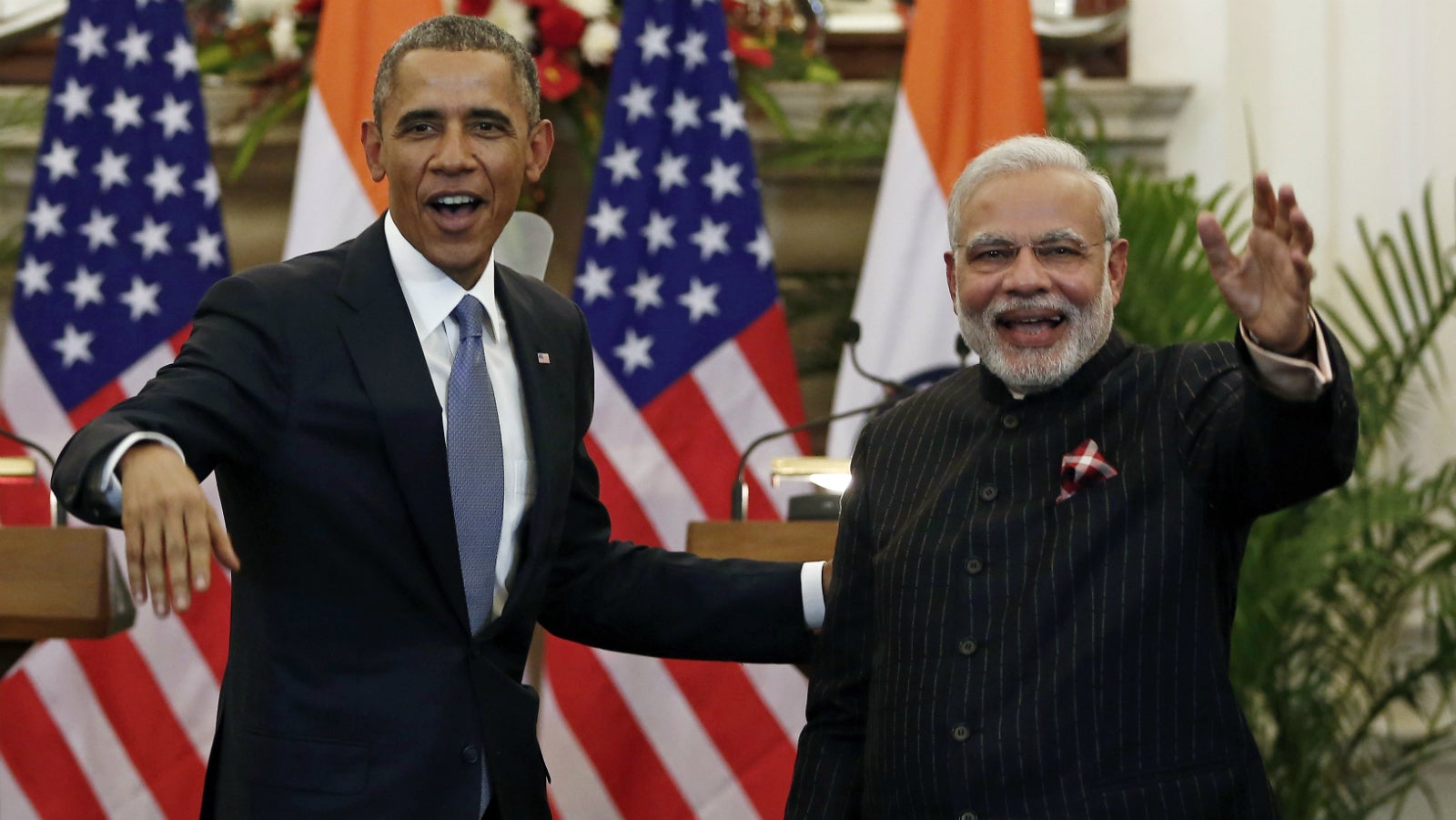The Modi effect: US FDI into India has jumped 500% in the last two years
When India’s commerce minister Nirmala Sitharaman meets US commerce secretary Penny Pritzker in New Delhi on Tuesday (Aug. 30), the duo will have plenty to cheer about.


When India’s commerce minister Nirmala Sitharaman meets US commerce secretary Penny Pritzker in New Delhi on Tuesday (Aug. 30), the duo will have plenty to cheer about.
After all, they are meeting in the backdrop of a spectacular 500% growth in US foreign direct investment (FDI) in India over the past two years. Since prime minister Narendra Modi took charge in May 2014, FDI from the US grew from an unremarkable $806 million in the 2014 fiscal year to $4.12 billion in the 2016 fiscal.
Reforms undertaken in recent months have shown positive results, a press release from the government of India said on Aug 29.
India’s total FDI also grew by 54% to $55.4 billion in 2016 from $36 billion in 2014. And this has come at a time when globally, there is a decline in investment flows.
“There is no doubt that the Modi government has begun a process of improving the investment climate,” Milan Vaishnav, a senior associate at the Carnegie Endowment for International Peace, said. “The pace of change is incremental but the trend appears to be headed in the right direction. Therefore, the Indian government does deserve credit.”
Modi’s ballast
India and the US have come closer over the past decade, with the US even viewing India as a strategic partner in South Asia.
However, since 2014, the Modi administration has re-energised the ties by focusing on improving India’s ease of doing business. This is reflected in its decision to liberalise India’s FDI policies across sectors such as aviation, pharmaceuticals, defence, and insurance, among others.
Immediately after coming to power, the government launched the Make in India campaign, an ambitious programme to turn India into a global manufacturing hub.
Last month, India also passed its biggest tax reform in 70 years, the goods and services tax, which will replace some 17 different taxes and bring them under one unified tax regime.
“It is difficult to nail down causation (for better FDI),” Vaishnav said. “But there are likely several factors: a more supportive investment climate in the US, recovering economies in both countries, and a sharp decline in the growth prospects of other emerging markets, such as Brazil, China, and Russia.”
Meanwhile, bilateral trade, too, has clocked some splendid figures during the same period. ”We have broken every record that we keep in every category,” Richard Verma, the US ambassador to India, said on Aug. 29. “The highest two-way trade numbers ever between the countries last year has reached $109 billion; the highest defence trade numbers last year was $15 billion; we even did $6 billion cumulatively in agri-trade.”
Even as bilateral ties improve, New Delhi and Washington have many challenges to address. For instance, the US has consistently raised the protection of intellectual property rights and market access as issues, while India wants better access to work visas for its people.
Sitaraman and Pritzker, meeting on Tuesday to build on the Strategic and Commercial Dialogue (S&CD) set up in September 2015, have their work cut out for them.